Homo Spatius. Designers de l’espace. Saint-Étienne, France
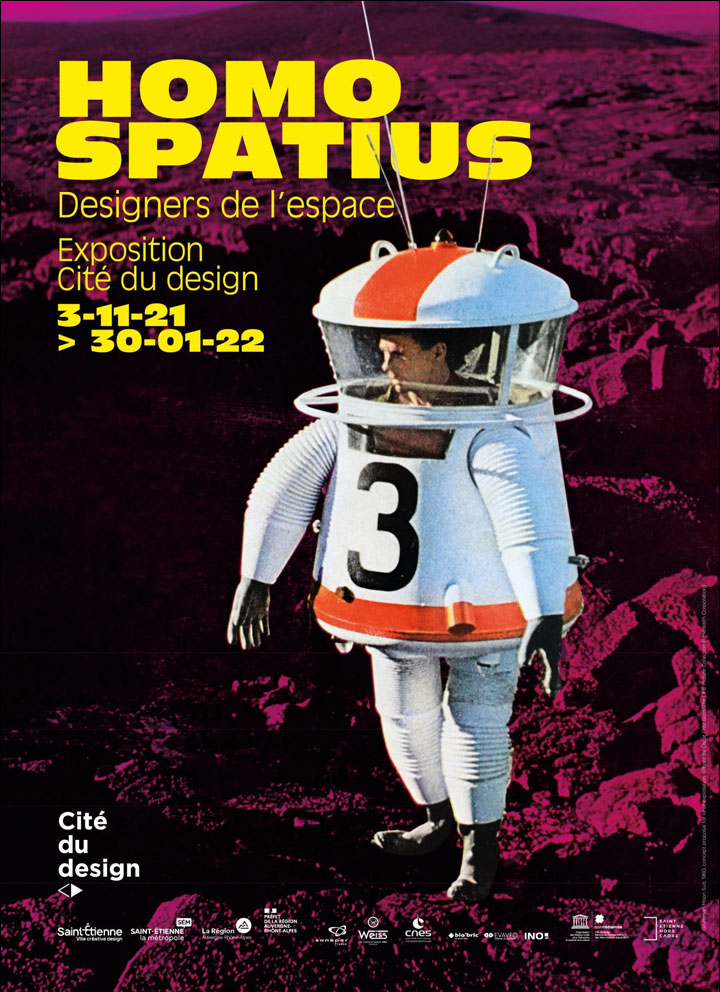
Poster for the exhibition Homo-Spatius, space designers © Cité du design
From Nov 3 to Jan 30
Exhibition
Homo Spatius. Space designers
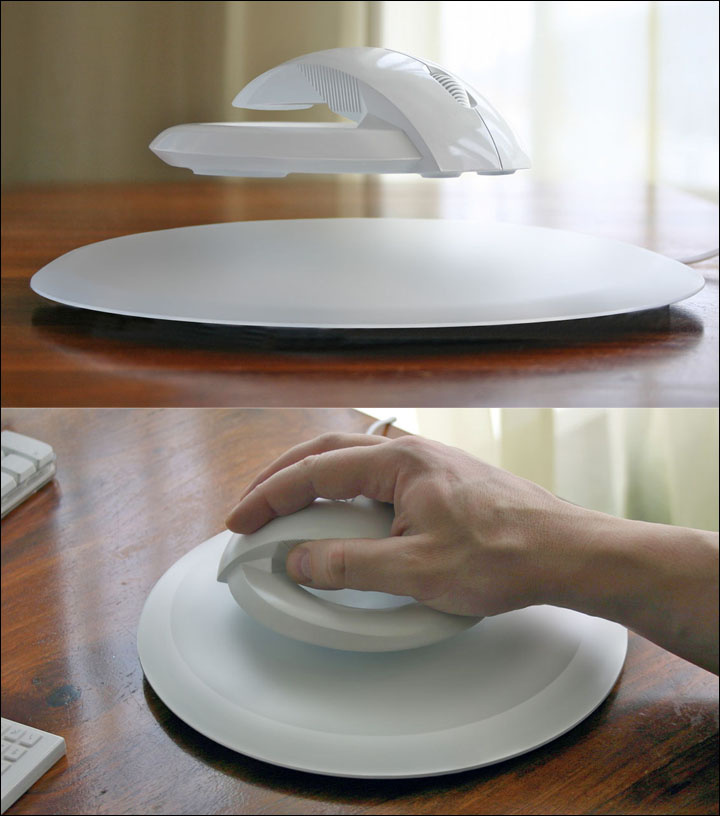
Vadim Kibardin, Levitating Wireless Computer Mouse / The Bat – © Vadim Kibardin 2013
In collaboration with the Centre national d’études spatiales (Cnes), the Cité du design is interested in the challenges of design for a transition to a new space age. The exhibition is embodied in various projects by designers, artists, engineers, architects and authors, in order to explore the intersections of this epic that enchants and worries us, and that transports us into the fields of science, design and the imaginary.
The tracks of moon rovers and Mars rovers have joined Neil Armstrong’s bootprints. These are a kind of throwback to the human footsteps in the Magdalanian caves and remind us that, between dreams of faraway places, curiosity and territorial ambition, human beings have never stopped advancing into ever more varied biotopes and in doing so, have developed their knowledge and tools. Without talking about prehistoric design, on close examination prehistoric tools reveal a lot - perfectly shaped for their function, complex in their execution, materials carefully chosen for their quality and undeniably aesthetic.
The exhibition explores how the paths of these two epic stories cross and feed off each other, with periods of great intensity. The shift to the modern era gave rise to a flurry of activity populated with adventurer-astronomers, scientist-men of letters, craftsmen-inventors. A collective desire has developed that draws on still recent exploits in seafaring and navigation, a standard of forms and images has developed and a desire to explore the universe that has led to space travel and the great space observatories we know today. And literature, cinema, theme parks are now all effective vectors supporting the human aspiration to venture out into space.
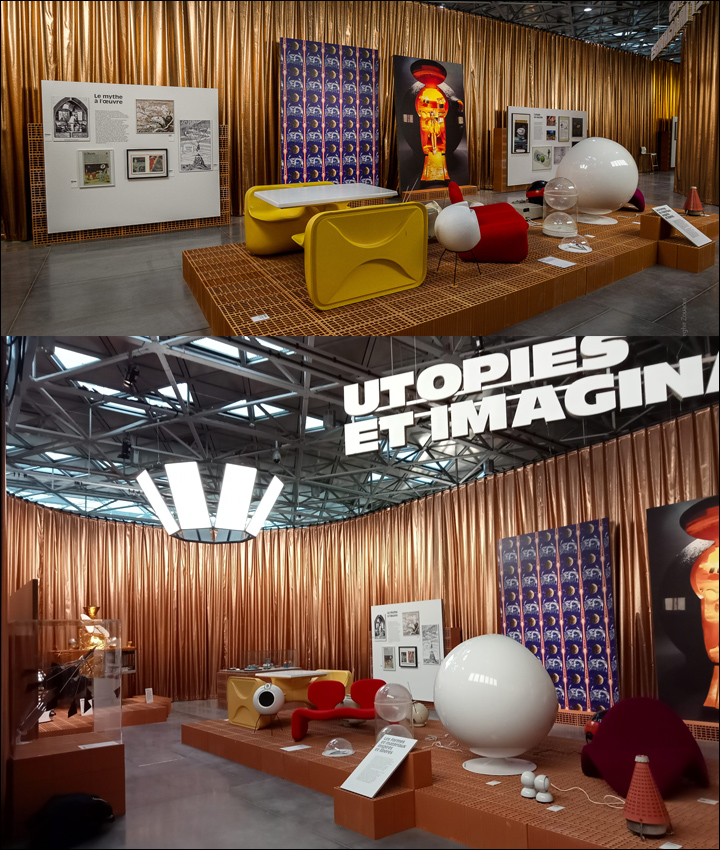
Alexis Bertrand, ADAGP 2021 – © Seghir Zouaoui – Cité du design
One area where design clearly makes its mark is on living spaces, whether in space or on Earth. As the space age dawns, architects will undoubtedly be thinking up new, connected, ephemeral or floating urban utopias. In the atmosphere of optimism generated by recent feats in space, designers are also finding new things to explore with the appearance of new materials.
Finally, the current decade has seen a dual momentum building: the preparation of a long-term, larger presence of humans in orbit, but also on the Moon, and that of a return from space back to Earth, due to the focus on climate issues in particular.
Plenty to keep fuelling what are now becoming time-honoured interactions. From booster to rocket launcher, from telescope to satellite, from space suits for all to furniture, the exhibition sketches out a twin path.
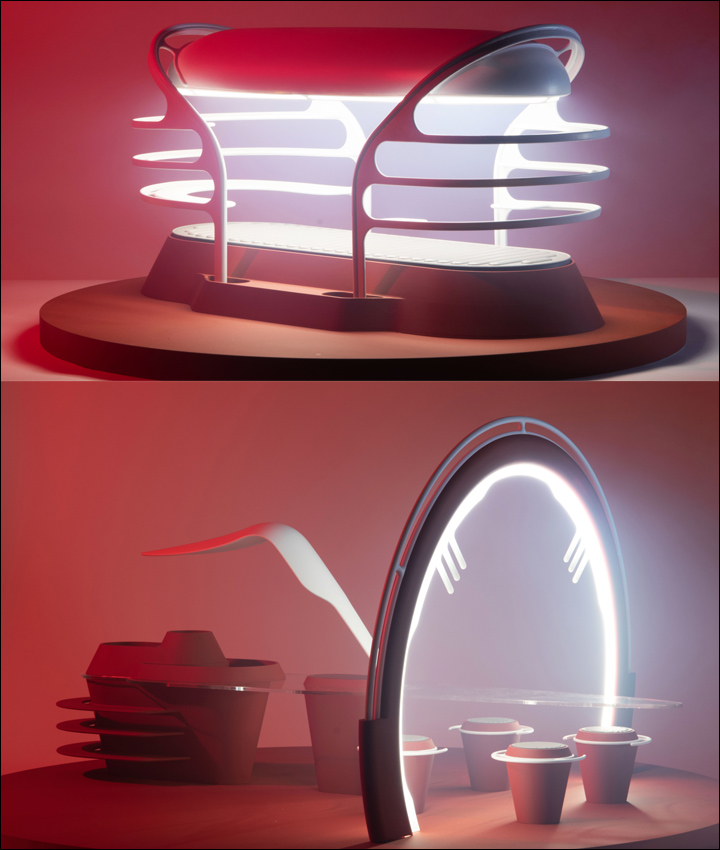
From Homo Sapiens to Homo Spatius
According to pre-historians, Sapiens (modern human) were already preoccupied with the functionality and adaptability of the shape and function of their tools, but also their aesthetics. A million before Sapiens arrived on the scene, Homo habilis, known as “handy man”, was already capable of designing tools to meet their needs, a sort of designer ahead of the times. The most common definitions of design mention matching form to function. Palaeontologist André Leroi-Gourhan wrote this on the subject: the prehistoric tool (biface, scraper, knife, etc.) “highly adapted to its particular use, testifies to the quality of the encounter between function and form”. Sapiens also showed great adaptability; armed with tools fashioned from stone and bone, they emerged from their African cradle and managed to populate every continent. Today, they are considering leaving planet Earth to undertake a celestial voyage and conquer new territories. This adventure has already given us new global heroes, Yuri Gagarin and Neil Armstrong the first among them.
Living in Space(s)
The history of humankind is also that of the discovery of and adaptation to new virgin spaces ostensibly hostile to humans: arid lands, glacial regions, the oceans and finally, space. Today, the exploration of our world, the Earth, is largely complete. In the last half-century, human exploration has turned to the cosmos. As soon as we start talking of the durable occupation of a place rather than just temporary stays, the issues are no longer limited to survival and operational manoeuvres. Instead they encompass many other needs, such as ergonomics, comfort, work, hygiene, food, health and leisure. These subjects require joint work by engineers, architects and designers. The discovery of new territories and the competition that the space agencies have embarked upon are presented as challenges to creatives. New requirements, but also a new range of as yet unexplored possibilities release them from earth-bound constraints and standards such as gravity. And space tourism then becomes another step to be taken. The end-user of the facilities is now no longer a highly trained spaceship crew member, but a rich and demanding customer. The question of comfort and pleasure becomes crucial and needs the implemented solutions to be revisited.
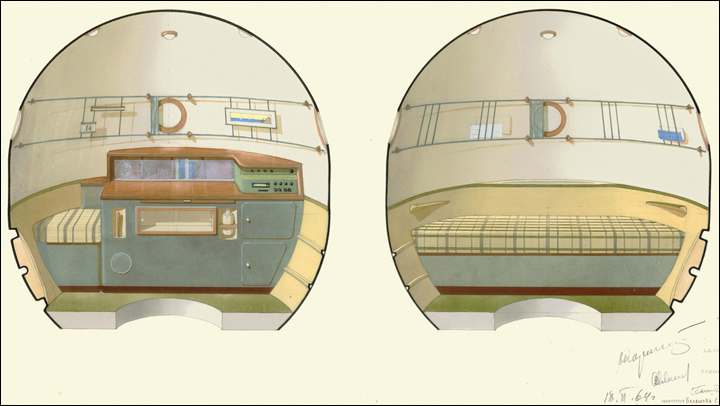
Final design of the interior of the Soyuz orbital module (1964). Credit: Philipp Meuser (ed.): Galina Balashova. Architect of the Soviet Space Programme. Berlin 2016
Imaginary Utopias
In July 1969, the Apollo 11 mission put an end to the race to the Moon. For two decades, images of the universe invaded the media. The acceleration of the conquest of space inspired creatives, who started to revisit the forms of our everyday objects. Plastic and fibreglass became the dominant new materials and new aesthetics appeared, inspired by astronauts’ helmets, rockets, planets and portholes completing the repertoire of forms. Confidence and criticism were mingled in the reactions to what seemed like the promises of technology. While Nasa was sketching out the possibility of a life for humans in space colonies, some avant-gardists were envisaging utopian, floating, ephemeral, connected cities for life on Earth. The conquest of space was only made possible after an enormous amount of work constructing a collective imaginary: from the fanciful tales of the authors of Antiquity to the novels of Jules Verne or H.G. Wells there is but a small step. Social science fiction in literature and film opens up the space-time dimension and creates a universe of uncertainty where the heroes have to find the path to survival between realism and fiction. The Space Opera featuring vast galactic empires where dramas play out between characters worthy of Greek tragedy completes the race for the imaginary.
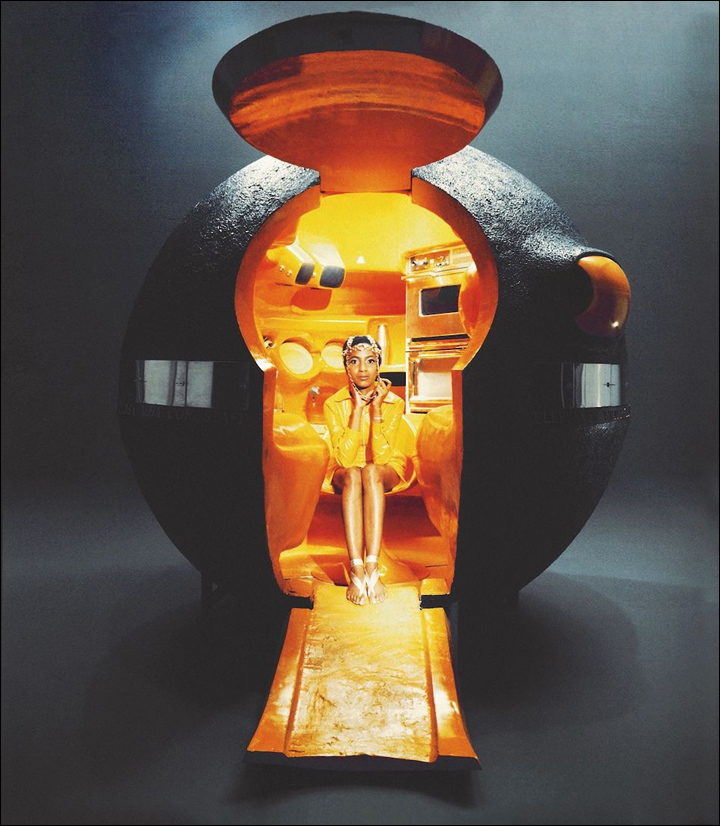
Spherical Kitchen, Luigi Colani, 1968/71 © Bangert Verlag
Cité du design/Esadse
3 rue Javelin Pagnon
42000 Saint-Étienne
04 77 49 74 70
info@citedudesign.com